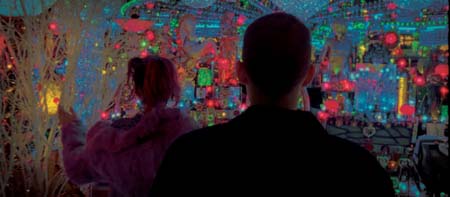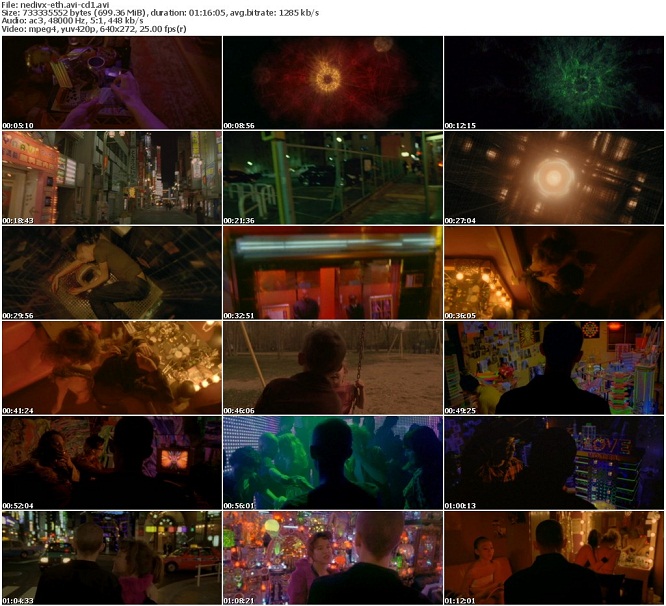[Caveat: the following piece contains spoilers about both movies discussed.]
By some aligning of the stars, “Showgirls” and “Enter the Void” dropped into my mailbox in the same week (I certainly hadn't planned it that way). Even though the former is an exploitative piece of high camp from 1995 by those shameless commercial hacks, Paul Verhoeven and Joe Esterhaz ("Basic Instinct"), and the other a psychedelic mindblower from 2009 by the Argentine provocateur Gasper Noe ("Irreversible"), the two pictures actually made for an interesting double feature, variations on the theme of "Sex Money Power", as a gaudy sign in "Void" blares. (Chuck in "drugs" and you've covered it.)
Both films take us into a world of neon, of night, coke, pole-dancing, colorful marquees promising adult fun within. And they take us behind the scenes to show how all this hedonism is manufactured in their respective worlds: Las Vegas ("Showgirls") and Tokyo ("Void").

Pretty heady stuff for a sheltered kid from Southeast Ohio.
I hadn't seen it before, but you probably know that "Showgirls" is about a tough girl, Nomi (Elizabeth Berkely), who comes out to Vegas to follow her "gotta dance!" dream. She takes to the pole to make ends meet, though her dream is to be a showgirl. One day she catches a rehearsal of a hotel show and gets her first glimpse of the star (played by Gina Gershon as a sexy, sneering cokehead). Immediately Nomi envisions herself taking the older woman's place. (The movie echoes a classic Hollywood structure: young woman on the make, older star maneuvering to cover her ass.)
Elizabeth Berkley is striking, statuesque; Verhoeven shoots her with that corrupt, alluring sheen for which he's so well known. Every shot she's in she gives you some kind of visceral jolt. She moves a bit like a mannequin come to life, like an alien approximating human behavior. "Strong" isn't the word: she's fierce. (I reckon Lady Gaga's seen this picture more than once.) She radiates power, holding her own in a world of dangers (men, drugs).

"Showgirls" is a joke, of course: a ludicrous pulp melodrama. None of its people act in any recognizably human way. Although remarkably witless and incompent, as a joke--a fantasy--it's funny enough. However, then it veers into exploitation movie territory. The scene where a star of the Vegas stage and his bodyguards rape Nomi's friend, and the ridiculous revenge-fantasy scene where Nomi goes to his hotel and kicks his ass? These are played for entertainment, and are thus so corrupt that you really have to laugh. (In that I suppose in a weird way the movie is an honest mirror held up to a facet of American culture).
Is the movie in on the joke? (Certainly the actors are.) I have a sinking suspicion that Verhoeven and Esterhaz actually think they've made something that takes a hard look into the abyss, but actually it's got the depth of a puddle.
"Enter the Void" is something else. Now I love provocateurs, but before this film I wouldn't have classed Noe with the finest of them--there's a twisted humanism in the best of them, like Von Trier and Haneke, as well as a kind of intellectual distance (and wit) that I wasn't getting from Noe. The best of them are never exploitive, exactly, the way I thought Noe's "I Stand Alone" was. "Irreversible" was an improvement: honestly disturbing and full of interesting ideas.

"Void", however, is an extraordinary film, a sensory experience that showed me things I've never seen in a movie before. It aims for that sort of spiritual, transcendent experience that, if you're like me, you're always looking for; I suppose on one level I'm always turning to movies looking for just such an experience.
At least in its opening sequences, it's the rare film shot in the first-person, that perceives its world as we do ours: our own individual consciousness carried around on our shoulders. It's about a young American kid, a bit of a seeker, who relocated to Tokyo and was finally able to afford to bring his sister over (Paz de la Huerta: yowsa!!). They've had a "blood brother/sister" closeness ever since their parents were killed in a car accident (unforgettably, viscerally rendered). To make money she takes to the pole, while he peddles drugs. He's as much an enthusiast as a seller, really. (There's a beautiful sequence at the beginning visualizing a trip.)
One night the police raid a club while he's carrying; he rushes to the stall to flush the drugs. In a frantic bid to dispel the cops, he stupidly yells out that he has a gun. A point on his chest erupts once and he realizes he's been shot through the stall door. Sinking, he feels his life ebb out of him on the floor of the squalid stall.
His soul, his consciousness then leaves his body and begins to flit about Tokyo, stuck in this world until it can find its way to a higher plane of existence. Finally the camera is as free as I've always dreamed it could be. Hovering, flying, floating, giving us a window on to visions flitting across his mind's eye, dreams, flashing memories of his life. (The point of view now is from just behind his silhouetted head).
The film contains some astonishingly beautiful visuals. The brother and sister enter a shop that she remarks "looks like heaven":

At one point the kid examines a glowing model of Tokyo made by an artist friend:

The sequences that take off into the inner and outer universes pick up the baton thrown down by the likes of "2001" and "Dreamscape" and take us if anything even further:

And it's not all sensory overload: there are long stretches when it's very, very quiet. Noe's had the courage to make the film just as overlong as he wants it to be, to convey the tediousness, the frustration of this soul flitting around our world looking for a way out.
Sometimes the kid's soul seems to be able to enter the body of a man while he's in the act of sex; we then get a very intimate view of the woman's head and shoulders. The movie finds something sacred, some ancient ritual, some human connection even admist the impersonal sex in the Love Hotel. As he floats he sees a glowing emanating at all points where bodies connect.
I've certainly never seen a shot of sexual intercourse taken from inside the vagina before. Having shown us the end of life, Noe now shows us the origin of it: wriggling sperm attempting to penetrate a human egg. “Enter the Void” is as much about life as it is about death. There's a recurrent image of a baby nursing at its mother’s breast. It dares to peer into the void, the abyss, and find something beautiful there, something more than pain.

Both "Showgirls" and "Void" depiect a demimonde comprised of men who are only interested in other human beings to the extent they can make money off of them. (As a hysterical Paz cries out over and over in "Void" after her brother is killed, even as she takes comfort in the arms of one of these men, “Evil people, you're all evil people!”). Both movies purport to be about human souls trying to navigate an inhuman world, but only "Void" is truly about a soul trying to find a home. Fake right down to its Hollywood ending, "Showgirls" contains not an ounce of soul (which is not to say it's not a laugh).
Only "Void" detaches "sex" from the "money" and "power" equation and connects it to the life force of the universe.
